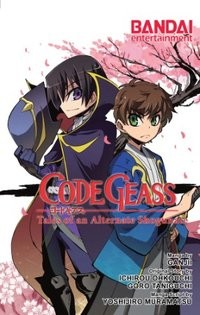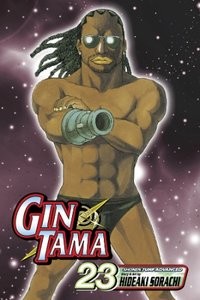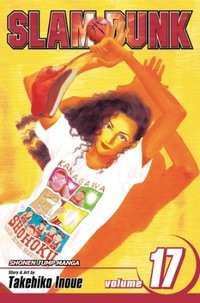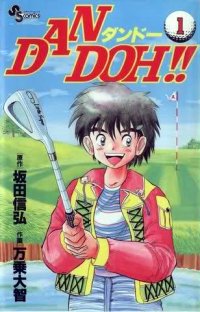RIGHT TURN ONLY!!
Doctors and Lawyers
by Carlo Santos,

I remember being 11 years old and telling my grandfather I wanted to be a lawyer just like him. Life, however, has a way of derailing the plans you make when you're 11.
I'd like to think he's still proud of me anyway.
BLACK JACK

Vol. 15
(by Osamu Tezuka, Vertical, $16.95)
FROM THE BACK COVER:
"Black Jack is called in to treat a young flower arrangement master. The talented artisan is suffering from acute porphyria which is impacting her digestive and nervous system. Given her current condition she cannot even stand to be in sunlight;
as it often induces fainting spells, hallucinations and seizures. For an artist who focuses on light and life, to not be able to use sunlight to bring life to her art the ikebana master almost believes she has no life to lead. However with every new piece that she creates there is no doubt to her mentors that life itself is worth living. And if she survives she might have a life-changing decision to make about her career."
EVIDENCE FOR:
Could this be Black Jack: The Travel Edition? Volume 15's highlight is the sheer number of exotic locales the doctor visits, from a tropical Okinawan paradise to an abandoned industrial island, from treacherous mountain passes to African diamond mines. Naturally, Tezuka's sheer talent as an artist comes through as he renders these landscapes in rich, evocative detail. And just as varied are all the characters along the way: the aforementioned ikebana master, an actress indebted to Black Jack's plastic surgery skills, a boy who is slowly and literally turning into a plant, a Nobel laureate whose "cure for cancer" has an ironic twist to it, even a fellow doctor with some very unusual operating habits. It takes incredible creativity to make every single chapter in the book a brand new scenario—and incredible skill to introduce each new character, explain their dilemma, and have Black Jack resolve the issue within the limited page count. And how can anyone not be impressed by the anatomical accuracy that goes into drawing all those surgery scenes? Yet for all these displays of skill, Black Jack's message of living life by one's principles is the point that cuts the deepest.
EVIDENCE AGAINST:
It's always a mixed bag with Black Jack. This volume does take us to some fascinating places, but it's not always clear what Black Jack is accomplishing by being there. When he gets stuck in the African diamond mine, for example (shades of Ayako anyone?), he just kind of sits there ... until the right time arrives for him to get rescued. Not exactly a brilliant dramatic twist. Neither is the one where he operates on a boy with head trauma and spends the rest of the chapter trying to get someone to pay up. In fact, any of the stories that lean heavily on the "Dr. Black's fees are insane" plot point tend to be unappealing, making our hero look like a greedy scumbag, and then if he does waive the charges it looks like he's doing it on a whim, rather than out of kindness. The lack of continuity between chapters, the logical loopholes (somehow he can instantly get to any place on earth) and the sparse coverage of Black Jack's personal life (just two back-story chapters out of fourteen) also make it hard to truly "get into" the world of this series.
FINAL VERDICT:
There always seem to be just as many frustrating stories as there are rewarding ones. Between impressive displays of creativity and plot-challenged clunkers, this one averages out to a C+.
CODE GEASS: TALES OF AN ALTERNATE SHOGUNATE

(by Yoshijirō Muramatsu and GANJI, original concept by Ichirou Ohkouchi and Goro Taniguchi, Bandai, $10.99)
FROM THE BACK COVER:
"Lelouch, Suzaku and other young warriors battle in the late Tokugawa Shogunate era, where the power of the Geass forced Japan to falsely open up their ports!
The curtain rises on an alternate world tale of Code Geass!!"
EVIDENCE FOR:
Yes, Code Geass in the Nineteenth Century is exactly as crazy as it sounds. Avoiding any attempt at "realism" or "making sense" (not that the original was particularly logical either), this one-volume spinoff is parody at its finest—a mad mashup of the samurai and mecha genres. Familiar historical details like Commodore Perry's arrival in Japan and the "Black Ships" of Perry's fleet mingle with contemporary Code Geass trappings like the Knightmare mechas, superhuman Geass powers, and of course, pizza. The result is an absurd and often amusing juxtaposition of past and future (the Knightmare control panels are run by abacuses?!), with the silliness only further accentuated by Lelouch, Suzaku and the gang piloting their robots and screaming at each other as if this were the most natural thing in the world. In the nineteenth century. The art comes alive with bold, varied lines and dynamic shots of mechas flying across the feudal Japanese countryside ... and just look at how they remodeled Mt. Fuji. Action scenes pop up on almost every page, making this a high-energy thrill ride through alternate Japanese history.
EVIDENCE AGAINST:
Thank goodness this monstrosity is only one volume long. Any longer, it seems, and they have had to start worrying about stupid things like an actual plot. Tales of an Alternate Shogunate starts with a hilarious concept, but remains exactly that—a concept—with no actual content between the covers. Aside from a few brief pages to explain the premise, it's basically one mecha battle after the next, with Lelouch and company somehow pulling their ridiculous mechas out of nowhere. (Of course, this loophole is conveniently explained by saying that he has the Geass power to manipulate three-dimensional space.) But even if one actually enjoys a hundred and fifty pages of pointless anachronistic robot warfare, there's still the issue of the fights being poorly planned out. Battle tactics go right out the window, as everything is just mechas shooting and charging at each other, and the art—dynamic as it may be—is often a confusing mess of mechanical parts and angry pilot faces. The characters themselves are drawn in a simplified, childlike style that makes it hard to take them seriously. Then again, that was the whole point of this spinoff anyway: to be a dumb, forgettable joke.
FINAL VERDICT:
It's a funny idea, but some ideas should remain in people's heads and never be committed to paper. This D effort proves as much.
GIN TAMA

Vol. 23
(by Hideaki Sorachi, Viz Media, $9.99)
FROM THE BACK COVER:
"The samurai didn't stand a chance. First, the aliens invaded Japan. Next, they took all the jobs. And then they confiscated everyone's swords. So what does a hotheaded former samurai like Gintoki 'Gin' Sakata do to make ends meet? Take any odd job that comes his way, even if it means losing his dignity.
Gin's Hot Spring Travel Tips
1. If it looks like a haunted mansion, it probably is
2. Ghosts like hot baths too
3. Skid marks on your briefs are unavoidable
4. Return your rented DVDs before you leave
5. When being chased by angry ghosts you only need to run faster than Shinpachi."
EVIDENCE FOR:
For business reasons, Viz Media is pulling the plug on Gin Tama with this volume, but at least it ends on a satisfying note. The haunted hot springs arc, which accounts for two-thirds of the book, is not only another screwball comedy masterpiece—where else are you going to see the ghost of St. Francis Xavier playing a role?—but also takes the shape of a classic adventure/battle story. Gin gets trapped in an inn full of ghosts (jokingly named "stands" a la JoJo's Bizarre Adventure), tries to escape, and ends up in a supernatural battle that is as eye-catching and dramatic as it is hilarious. The solo chapters aren't too shabby either, with one that even simultaenously pokes fun at anti-smoking regulations and Dragon Ball (seriously, just read it to find out how that works). Sorachi's sense of humor is always on point, with perfectly timed non sequiturs, mundane situations spiraling into silliness, and the occasional potty joke. Visual gags also add to the fun, whether through slapstick violence or absurd side characters like half the main cast of Dragon Ball. Again, you've got to read it to believe it.
EVIDENCE AGAINST:
Gin's ghostly adventure ends with a bang, but it takes way too long to get there—or maybe it just feels that way because of the tedious pacing. For all its humor, the one thing this volume lacks (until the closing chapters) is energy; the characters practically sleepwalk through the early part of the haunted hot springs arc, pointing out things that are funny or weird but not truly reveling in the hilarity. The biggest drag is the feud between warlords Nobunaga, Mitsuhide and Hideyoshi, which pads out the story with some tawdry "old men in underwear" jokes. The humor also falls flat in the stand-alone chapter where Gin reminisces on his younger days—first off, it's a pointless flashback, and second, the mild racism is more awkward than it is funny. Sorachi's habit of trying to cram every snappy comeback and one-liner into the script also makes the artwork too crowded to enjoy; great action scenes and priceless facial expressions often get lost behind blankets of dialogue. Sometimes it's not even the words, but the compulsion to draw every little background detail, that makes this hard on the eyes.
FINAL VERDICT:
Despite Sorachi's throw-everything-out-there approach to comedy, he still makes readers laugh more often than not, and so this volume earns a solid B.
PHOENIX WRIGHT: ACE ATTORNEY

Vol. 1
(by Kenji Kuroda and Kazuo Maekawa, Kodansha Comics, $10.99)
FROM THE BACK COVER:
"Mystery and intrigue, Crime and Punishment, uncovering the truth—all in a day's work for the ace defense attorney Phoenix Wright and his beautiful assistant Maya Fey. Based on the hit game series, Ace Attorney brings new adventures to the games' colorful cast. Can Nick successfully swing the gavel of justice or will he be crushed by the weight of incriminating evidence?"
EVIDENCE FOR:
It may not be as interactive as the games, but the manga version of Phoenix Wright is just as intellectually engaging, with multi-layered cases penned by actual mystery author Kenji Kuroda. The first chapter alone manages to squeeze a novel's worth of intrigue into 60 pages, with a highly detailed murder case that has to be reconstructed bit by bit from evidence and testimony ... just like the real thing! The tension comes alive in the courtroom, as Phoenix and his rival go at each other with deductions, revelations and turnabouts. And that's just for warmups—the rest of the book is even more complex in scope, with a troubled tech tycoon pulling Phoenix and Maya into a web of strange incidents surrounding him. Kuroda's creativity as a writer comes out in this longer storyline, as bizarre personalities present themselves (a creepy brother obsessed with spiders, for example) and uneasy relationships come to light. Such a striking cast also calls for striking character designs, and artist Maekawa is up to the task, with names and faces encompassing the entire spectrum—sometimes cute, sometimes comical, but always memorable.
EVIDENCE AGAINST:
Although the storylines are just as intricately constructed as in the games, this adaptation is a prime example of what happens when a writer and artist get their wires crossed. Often, this volume feels like a writer's script set to static images, instead of true visual storytelling. Much of the action in the first chapter involves the prosecution or defense narrating various events, which might work okay in a prose or interactive-text environment, but absolutely kills the pacing in manga. The rest of the book offers more action, as Phoenix and Maya actually move about and investigate matters, but again there's lots of dialogue and exposition to plod through. What really hurts this series, though, is the stiff, computer-assisted art. The characters may be creatively designed, but it often appears to be a struggle just to get the faces and anatomy right; the backgrounds are even worse with flat, artificial scenery that is about as realistic as the set of a school play. Page layouts also lack a sense of flow, as numerous dialogue balloons end up smothering the visuals.
FINAL VERDICT:
Although the stories themselves are deep and engaging as any whodunit, the visual aspect is often handled sloppily, making this an awkwardly-paced C+.
SLAM DUNK

Vol. 17
(by Takehiko Inoue, Viz Media, $9.99)
FROM THE BACK COVER:
"As the boys from Shohoku watch from the sidelines, the much-anticipated game between Ryonan High and Kainan High continues to heat up. Kainan superstar Maki's stellar play helps swing the momentum back in his team's direction, aided in no small part by a key player from Ryonan getting into foul trouble. However, Captain Akagi and company leave the game early when they receive an alarming bit of news: Coach Anzai has collapsed and is now in the hospital!"
EVIDENCE FOR:
Even with a bunch of secondary characters taking center stage in this volume's first half, Slam Dunk proves that great sports action is universal. Familiar names like Sakuragi, Akagi and Rukawa may be off the court, but Takehiko Inoue still draws up a storm with perfectly posed freeze-frame shots, dramatic moves that explode off the page, and players whose game faces exude intensity. The Kainan-Ryonan game also showcases some of basketball's more subtle strategies, like defensive substitutions and the art of fouling (or not fouling). Of course, for some readers, subtlety means something entirely different—like the touching flashback about Sakuragi's father, and the emotional coming-together of the Shohoku team when they learn about Coach Anzai's incident. That laid-back interlude is well-timed, as the excitement ramps up again when Shohoku and Ryonan face off in the last few chapters—and Sakuragi's intensive shooting practice comes in handy right away. It's always nice to see the payoff come after a training arc. Inoue's command of pacing is also spot-on: the game speeds up, slows down, and even comes to dramatic pauses as dictated by the smooth yet action-packed panels.
EVIDENCE AGAINST:
While the Kainan-Ryonan game is reasonably interesting, let's be honest here: who really wants to see a bunch of nobodies playing against each other? After all, basketball (in its modern incarnation) is a game driven by big stars and personalities, and the first part of this volume offers little in that vein. Inoue tries to make something out of the head-to-head matchup between Kainan's dominant center Maki and Ryonan's explosive scorer Sendoh, but there's simply no substitute for iconic figures like "rebound king" Sakuragi or "gorilla man" Akagi. And when the Shohoku team finally does get its moment in the spotlight—more than halfway through this volume—a lot of that time is wasted on player introductions at the start of the Shohoku-Ryonan game, as if we didn't know the characters already. The one time that this volume truly focuses on the main cast is when the team meets up at Coach Anzai's hospital bedside, but that interlude is entirely too brief, and invokes the overly familiar let's-win-one-for-our-injured-teammate cliché. Here's hoping the boys get better exposure next volume.
FINAL VERDICT:
Yes, it would've been more enjoyable if the focus had been more on Shohoku's boys—but there's still enough good basketball and good character-building for a B-.

DAN DOH!!

Vol. 1
(by Nobuhiro Sakata and Daichi Banjou, Shogakukan, ¥407)
FROM THE ENCYCLOPEDIA:
"Tadamichi 'Dandoh' Aoba is playing a baseball game with friends Yuka and Kohei when he hits a wild fly ball which crashes into the principal's potted plants. Rather than getting mad, the principal admires Dandoh's swing and introduces him to the world of golf. Now it's an adventure in golf as Dandoh is under the watchful eye of a former pro-golfer. They enter a tournament together and play for a shot at the national championships."
EVIDENCE FOR:
Of course, golf is a horrible boring sport for old guys. The main character even says as much in the first chapter. But Dan Doh!! does what only manga can do, injecting visual flair and colorful personalities into a story that makes this boring-old-man sport exciting. Banjou's charged-up artwork, with speedlines and a sense of motion, accentuates the windup and release that goes into every golf swing. Even the tension of landing a tricky putt is brought out thanks to well-planned visual pacing. Meanwhile, the characters' expressive faces and elastic gestures make them lively and instantly likable. Still, it's the underlying themes that really fill this story out: the long second chapter, where Dandoh and his friends have to practice 500 swings everyday for a month to prove their work ethic, is an truly inspiring tale of determination—as well as a reminder that it is often pure hard work, not just talent or cunning, that sets apart a champion. Just as inspiring is the secondary storyline where pro player Shinjo, whose career was cut short by injury, finds new a purpose in life after taking on Dandoh as his student.
EVIDENCE AGAINST:
Every youthful sports story has to start off with some clichés here and there, and this one is no different. But even by the genre's standards, Dan Doh!! is pretty hokey in some places—like trying to establish some early childhood trauma for Dandoh by making him pine for the mother he never knew. (Fortunately, this forced sentimentality is dropped pretty early on.) And the subplot surrounding player-turned-mentor Shinjo often crosses the line from heartwarming into just plain saccharine: "Alas, my career was tragically cut short, and now my life has no meaning ... until these kids showed up and now I watch them practice everyday in my backyard like a creep." And if it's not contrived displays of emotion, there are also contrived how-to segments where the tools and rules of golf have to be explained—just like in the first volume of any sports series. There's also more cardboard storytelling to be found in the later chapters, where rival characters built upon the most basic stereotypes start showing up: the snooty out-of-town rich kid, for example, and the savage bully who just wants to crush everyone.
FINAL VERDICT:
Although the cheese factor is pretty high, the energetic characters and general "Do your best!" aspect still make it a lighthearted, feel-good sports series.

The Korean wave is spreading across the world at full force, and it's time to hop aboard the bandwagon! If you want to know what's good in manhwa, this week's contributor Brian Ho of Super Manga Fighters Go! has an excellent recommendation to share.
THE BREAKER

(by Jeon Geuk-Jin and Kamaro [Park Jin-Hwan], Daiwon C.I. Inc., ₩3800-4200 ea.)
The Breaker is a wonderfully violent and epic tale about a young lad's struggle to change himself. The main character, Yi Shioon, is a weak, small and cowardly boy who often finds himself falling victim to the schemes of the school bully, Chang-ho. One day, he gets a new teacher (Han Chun Woo) who is actually a martial artist with MAD skills. Wanting to become stronger, he blackmails Chun Woo into training him so he can protect those he cares about. With his training, however, come some very unconventional and life-threatening situations. That, and he learns that his master is actually "Goomoonryong" (Korean for "Nine Arts Dragon"), the most wanted man in the world of Murim, a covert martial artist society filled to capacity with people who can break a billiard ball by clenching a fist and stuff like that. Well ... I guess it doesn't get much worse than that for a kid, huh.
Prepare for an emotional roller-coaster when you start to read The Breaker; it tends to switch tones from serious to light-hearted with the turn of a page. As a martial arts series, it has all that rough-and-tumble training and skull-cracking (literally) fight sequences one would expect. But it also portions out a hearty serving of "piss you off," especially when it comes to the bully-victim dynamic between Shioon and Chang-ho.
Thankfully, just when you feel like calling the lynch mob to "rub out" Chang-ho, some humour gets rolled in. This aspect is mostly carried by Goomoonryong, whose facial expressions, perversion and unfortunate suffrage of recurrent cock-blocking, are all as awesome as his Soul Crushing Strike (aforementioned skull-cracking technique). Oh, and anyone who enjoys the sight of well-endowed women can rest assured that their appetites shall be satisfied.
Park Jin-Hwan does a great job in The Breaker's drawing department. Between the facial expressions and high-octane battles ... Ladies and gentlemen, we have a winner. The characters faces really drive the series' humour most of the time, but they also cause a kind of hype in the action sequences or when someone's getting told off. Heck, with all the teeth gritting and glaring these guys do, how could that not be a big part of the series? But the usually high-speed action sequences are just incredible. Seriously, impacts look like they could demolish buildings and, in true manga/manhwa style, speed lines and motion blur deliver a blistering sense of "powerfulness."
The Breaker's relatively grim plot (with all the bullying, beating, revenge, sinister schemes and the like) makes it sit comfortably amongst many other epic martial arts series out there. What it does do a little better than others though, is avoid exhausting the reader. The series clocks in at 72 chapters long, not hundreds upon hundreds. It's enough to nicely conclude the plot and leave room for a sequel (which is probably to be of similar length), while giving readers a joyride they won't soon forget.
That said, it's not afraid to step into deeper emotional waters, nor does it intend to keep the reader happy all the way through. It aggravates, enrages, touches, shocks, saddens and, at one point, even disgusts you while still providing that surge of adrenaline to get you all hyped-up. Then it leaves you feeling calmly satisfied after the right people get punched in the face.
Therefore, read The Breaker; 'nuff said. If not for any of the reasons mentioned above, simply because Goomoonryong is possibly more epic than Chuck Norris. Girls will sigh and salivate at his visage; guys will sigh and say "I wanna be that cool too." So have a look and experience why Korean manhwa is where it's at; I guarantee you it gives the Japanese and their manga a run for their money.
Is there a hidden gem of manga you'd like to reveal to the world? Is there a piece of garbage that deserves to be bashed in public? Or is there a title that didn't get a fair grade here, and you want to set the record straight?
Now's YOUR chance to be the reviewer! Write a review of about 300-400 words (a little more or less is fine) and include:
- your name.
- Title of manga (and volume no., if applicable)
- Author/Artist
- Publisher
- Briefly describe the story, then explain why this manga is great, terrible, or in between. Be objective, but also be entertaining.
Then send it in to rtoreaders (at) gmail (dot) com (plain text format preferred). One review will be selected out of all the submissions and will be published in the next column. All types of manga and manga-inspired comickry are accepted, from past and present, from Japan and beyond—what matters is that it's the Reader's Choice! NOTE: Submissions may be edited for formatting and grammar.
discuss this in the forum (9 posts) |